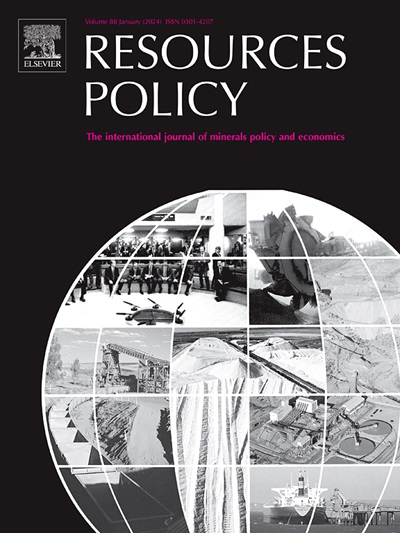记忆、神话和阴谋论:南非自由邦金矿区女性矿山衰落的遗产
IF 10.2
2区 经济学
0 ENVIRONMENTAL STUDIES
引用次数: 0
摘要
在南非过去的采矿业中,妇女被排除在商业采矿业之外,并被禁止与她们的移徙劳工伙伴在矿山生活。到20世纪80年代中期,变化正在发生,到20世纪90年代中期,对矿工及其家属行动的限制已经结束。矿工们仍然从一个矿井搬到另一个矿井,但现在有了妇女陪伴。对南非矿业历史的记忆研究主要是关于在矿山工作的人,以及影响他们生活的有权势的人和组织。在这篇论文中,我们转而关注这些女性,看看她们的经历是如何塑造她们对过去的记忆的。当他们讲述自己的故事时,我们听到了他们在金矿区三十年迅速衰落后的挣扎和遗憾。我们记录了大量的记忆、神话和阴谋论。我们的论文对资源社区中弱势女性的社会记忆文献做出了贡献。我们展示了他们对过去财富和安全的记忆如何决定了他们对未来的思考。本文章由计算机程序翻译,如有差异,请以英文原文为准。
Memory, myths and conspiracy theories: The legacy of mine decline for women in the Free State Goldfields, South Africa
In South Africa's mining past, women were excluded from commercial mining and forbidden to live with their migrant labourer partners at the mines. By the mid-1980s, change was in the air, and by the mid-1990s restrictions on the movement of miners and their families had ended. Miners still moved around from mine to mine, but now accompanied by women. Memory studies of mining history in South Africa have been largely about the men who worked in the mines and the powerful people and organisations who influenced their lives. In this paper we look instead at the women, to see how their experiences have shaped their memories of the past. As they told their stories, we heard about their struggles and regrets after three decades of swift decline in the Goldfields. We recorded a mélange of memories, myths and conspiracy theories. Our paper contributes to the literature on the social memories of vulnerable women in a resource community. We show how their memories of the wealth and safety of the past determine their thinking about the future.
求助全文
通过发布文献求助,成功后即可免费获取论文全文。
去求助
来源期刊

Resources Policy
ENVIRONMENTAL STUDIES-
CiteScore
13.40
自引率
23.50%
发文量
602
审稿时长
69 days
期刊介绍:
Resources Policy is an international journal focused on the economics and policy aspects of mineral and fossil fuel extraction, production, and utilization. It targets individuals in academia, government, and industry. The journal seeks original research submissions analyzing public policy, economics, social science, geography, and finance in the fields of mining, non-fuel minerals, energy minerals, fossil fuels, and metals. Mineral economics topics covered include mineral market analysis, price analysis, project evaluation, mining and sustainable development, mineral resource rents, resource curse, mineral wealth and corruption, mineral taxation and regulation, strategic minerals and their supply, and the impact of mineral development on local communities and indigenous populations. The journal specifically excludes papers with agriculture, forestry, or fisheries as their primary focus.
 求助内容:
求助内容: 应助结果提醒方式:
应助结果提醒方式:


